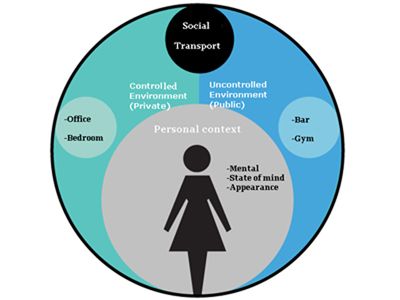
A context comprises all data that can be used to characterize persons, places or objects that are relevant to the relationship between user and system. New information models digitalize the traditional textbook and empower it with additional multimedia information (video, 3D representations…), which allow users to interact with those resources, and also include context-sensitive information.
As B. Schilit states in “Context-Aware Computing Applications” (1994), important context aspects are:
- Who (Identity Awareness), referring to user profiles and how the context identifies them to select the appropiate behaviors.
- What (Task Awareness), focusing on what the user is doing and what he wants to achieve. It determines the services the system offers.
- Where (Location Awareness), representing the knowledge of the physical location of the persons who will perform the tasks.
- When (Time Awareness), referring to the acquisition and maintenance of information about time and date, user timetables and real-time user agendas.
- Why (the behavior of a device), defining the interactivity motivation between user and system to simplify daily tasks, implicitly if possible, without user intervention.
Context dependent information systems, extract, interpret and use acquired data to adapt their functionality to the needs of professional users. Combining them with mobility technologies, they support agile training in industry processes in continuous evolution. Gradiant is developing a context-dependent mobile information system of this kind for medical staff in collaboration with Ednon, Spain. They will be offered multimedia information on medical protocols in-situ, as well as information on medical instruments and risk situations for patients.


